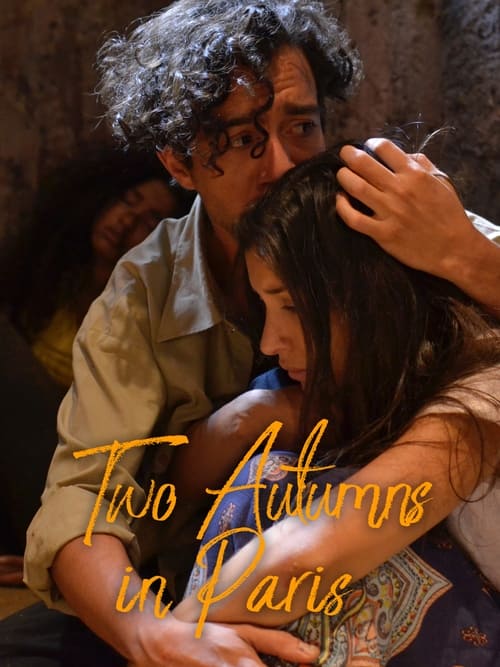
Ask Your Own Question
What is the plot?
What is the ending?
In the ending of "Some Birds Aren't Meant to Be Caged," the main character, a young woman named Lila, confronts her past and the choices that have led her to a pivotal moment in her life. After a series of emotional revelations and confrontations with her family, she ultimately decides to break free from the constraints that have held her back. The film concludes with Lila stepping into a new chapter of her life, symbolizing hope and the possibility of change.
As the final act unfolds, the scene opens in Lila's childhood home, where the atmosphere is thick with tension. Lila stands in the living room, surrounded by family members who have gathered for a tense discussion. The walls, adorned with family photos, seem to echo the weight of unspoken words and unresolved conflicts. Lila's mother, visibly distressed, pleads with her to reconsider her decision to leave the family and pursue her dreams. The emotional stakes are high, and Lila's internal struggle is palpable as she grapples with feelings of guilt and the desire for independence.
In a moment of vulnerability, Lila reveals her deep-seated fears and the suffocating nature of her upbringing. Her voice trembles as she recounts the dreams she has suppressed for the sake of family expectations. The camera captures her tear-filled eyes, reflecting a mix of sadness and determination. The family members react with a blend of anger and sorrow, each expressing their own fears of losing her. Lila's father, who has been silent until now, finally speaks up, revealing his own regrets and the burden of his expectations. This moment of honesty creates a crack in the family's facade, allowing for a deeper connection.
As the conversation escalates, Lila's resolve strengthens. She stands tall, asserting her right to choose her own path. The lighting shifts, casting a warm glow around her, symbolizing her emerging strength. The family members, though initially resistant, begin to soften as they witness Lila's transformation. The scene is charged with emotion, and the audience can feel the weight of years of unspoken tension being lifted.
In the final moments, Lila walks out of the house, leaving behind the life that has confined her. The camera follows her as she steps into the sunlight, a metaphor for her newfound freedom. The sound of birds chirping fills the air, reinforcing the film's central theme of liberation. Lila's face breaks into a smile, a mixture of relief and hope as she embraces the unknown future ahead of her.
The film concludes with a montage of Lila exploring her passions, engaging with new friends, and pursuing her dreams. Each scene is filled with vibrant colors and uplifting music, contrasting sharply with the earlier somber tones of her family home. The final shot lingers on Lila as she stands on a hilltop, looking out at the horizon, symbolizing the endless possibilities that await her.
In this ending, Lila's journey represents the struggle for self-identity and the courage to break free from familial expectations. The film leaves the audience with a sense of hope, emphasizing that while some may feel caged by their circumstances, the potential for change and growth is always within reach.
Is there a post-credit scene?
In the movie "Some Birds Aren't Meant to Be Caged," there is no post-credit scene. The film concludes its narrative without any additional scenes or content after the credits roll. The story wraps up with a poignant resolution that encapsulates the themes of freedom and self-discovery, leaving the audience with a sense of closure regarding the characters' journeys. The absence of a post-credit scene reinforces the film's focus on the emotional arcs and the transformative experiences of the characters throughout the main storyline.
How does the relationship between the protagonist and their family evolve throughout the film?
The relationship between the protagonist and their family is initially strained, marked by misunderstandings and a lack of communication. As the story progresses, the protagonist's journey leads to moments of reflection and confrontation, ultimately resulting in a deeper understanding and reconciliation with their family members, showcasing the complexities of familial love and support.
What motivates the main character to leave their hometown?
The main character, struggling with feelings of confinement and a desire for freedom, is motivated to leave their hometown by a deep-seated need to explore the world beyond their familiar surroundings. This desire is fueled by a series of personal experiences that highlight the limitations of their current life, including strained family relationships and a lack of opportunities.
What role does the setting play in the protagonist's journey?
The setting plays a crucial role in the protagonist's journey, contrasting the small, confining hometown with the vast, open landscapes they encounter as they travel. This juxtaposition symbolizes the protagonist's internal struggle between safety and the desire for adventure, highlighting how different environments influence their emotional state and personal growth.
Who are the key supporting characters, and how do they impact the protagonist's decisions?
Key supporting characters include a wise mentor figure who encourages the protagonist to pursue their dreams, and a close friend who represents the comfort of home. These characters impact the protagonist's decisions by providing guidance, challenging their fears, and ultimately helping them realize the importance of following their own path while also valuing their roots.
What specific events lead to the protagonist's moment of self-discovery?
Specific events leading to the protagonist's moment of self-discovery include a pivotal confrontation with a childhood friend that forces them to confront their fears, a chance encounter with a traveler who shares their own story of liberation, and a series of reflective moments spent in nature that allow the protagonist to connect with their true self and aspirations.
Is this family friendly?
Some Birds Aren't Meant to Be Caged, produced in 2016, contains themes and scenes that may not be suitable for younger audiences or sensitive viewers. Here are some potentially objectionable or upsetting aspects:
-
Emotional Turmoil: The film explores deep emotional struggles, including themes of loss, regret, and the impact of past traumas, which may be heavy for children to process.
-
Family Conflict: There are scenes depicting intense family arguments and conflicts that could be distressing, showcasing the strain in relationships.
-
Mental Health Issues: The film addresses mental health challenges, including depression and anxiety, which may be difficult for younger viewers to understand.
-
Substance Use: There are references to substance use that may not be appropriate for children, as they could lead to misunderstandings about addiction and its consequences.
-
Sadness and Grief: The narrative includes moments of profound sadness and grief, which could be upsetting for sensitive viewers, particularly those who have experienced similar feelings.
Overall, while the film carries important messages about resilience and healing, its emotional weight and mature themes may make it less suitable for a family-friendly viewing experience.






















